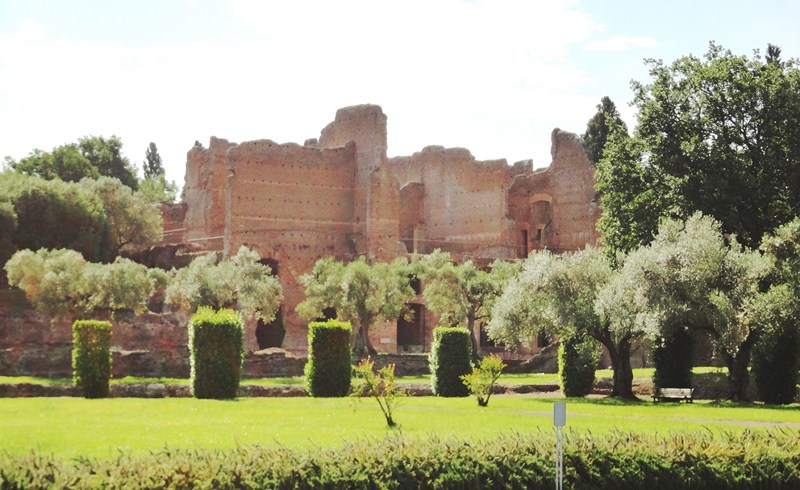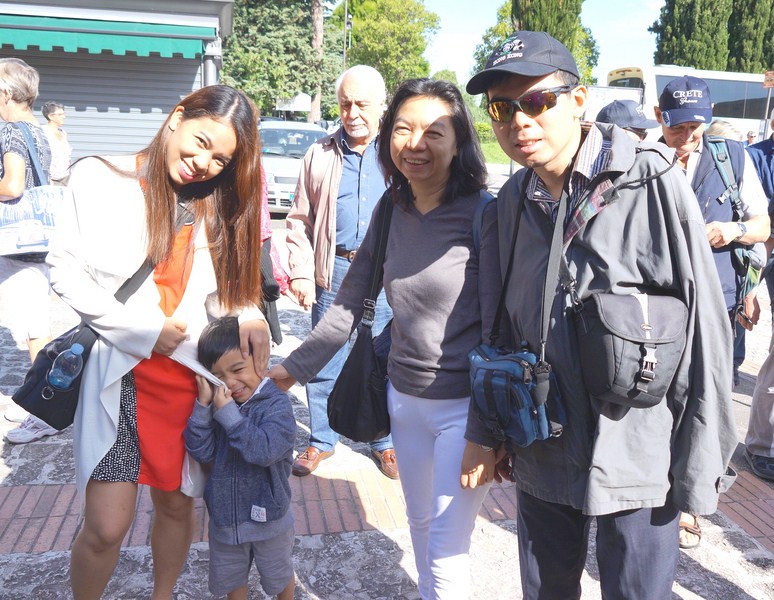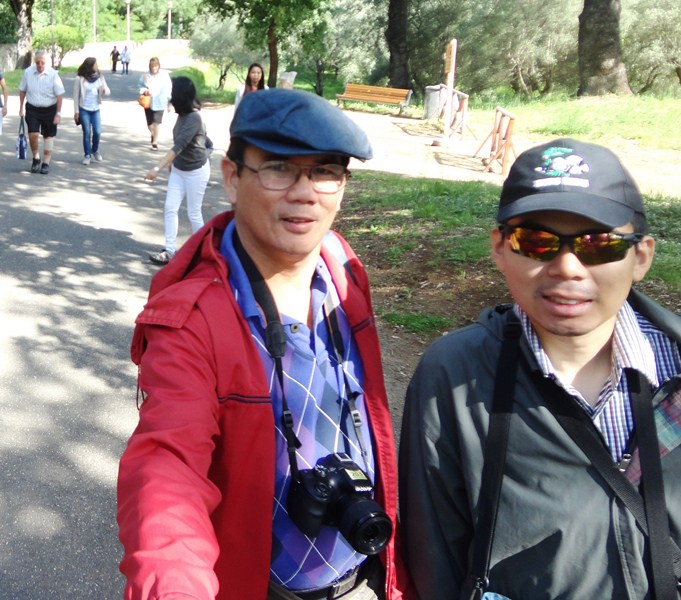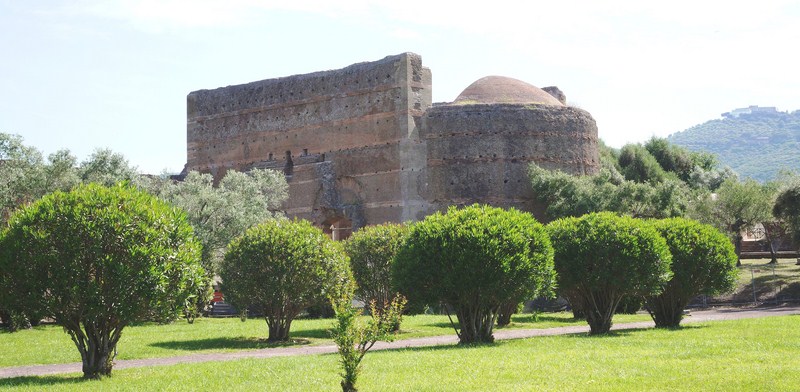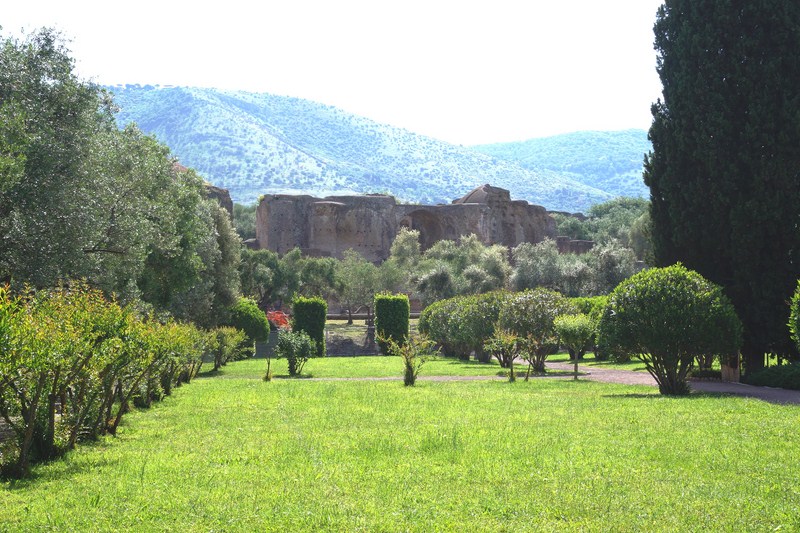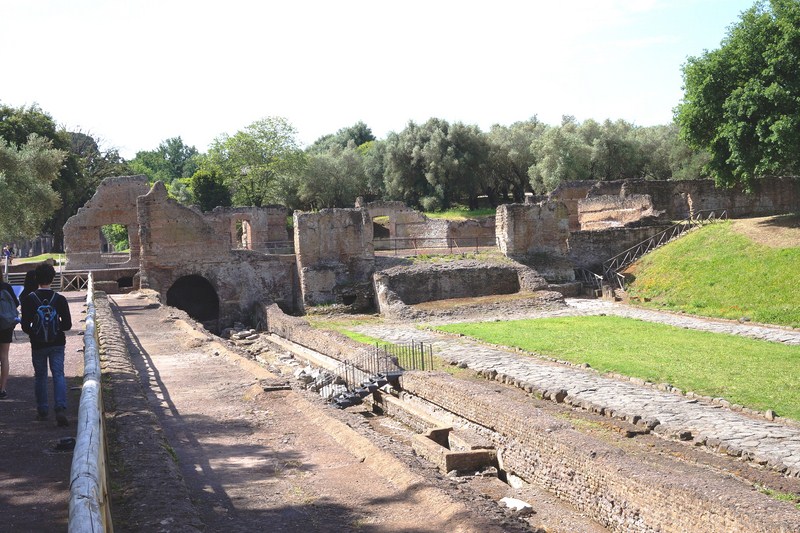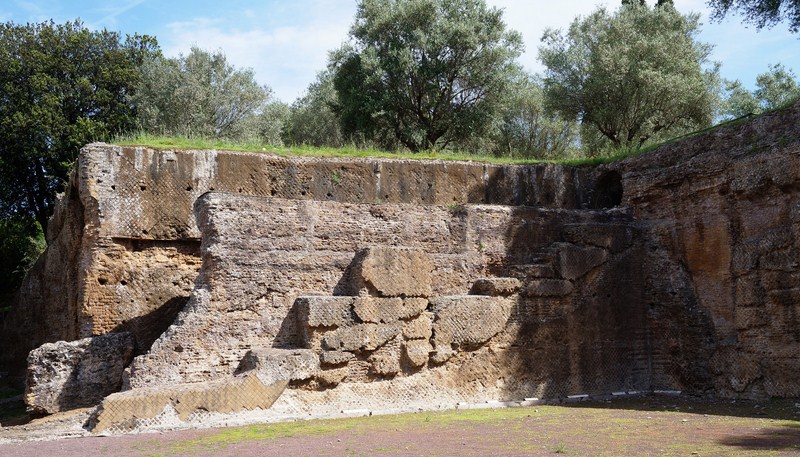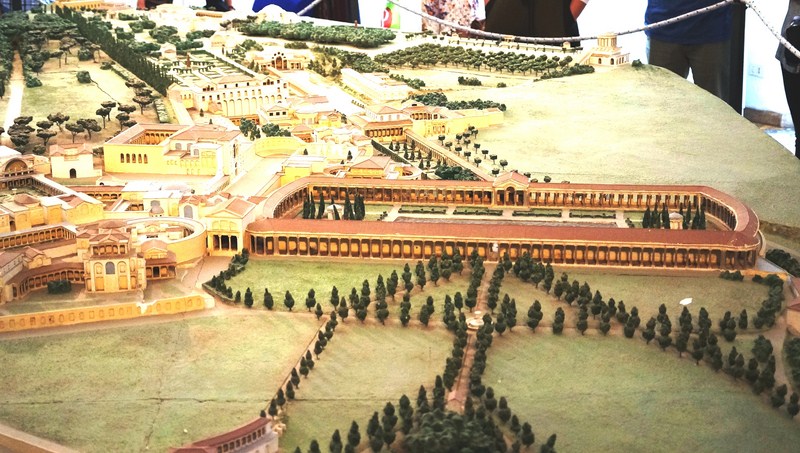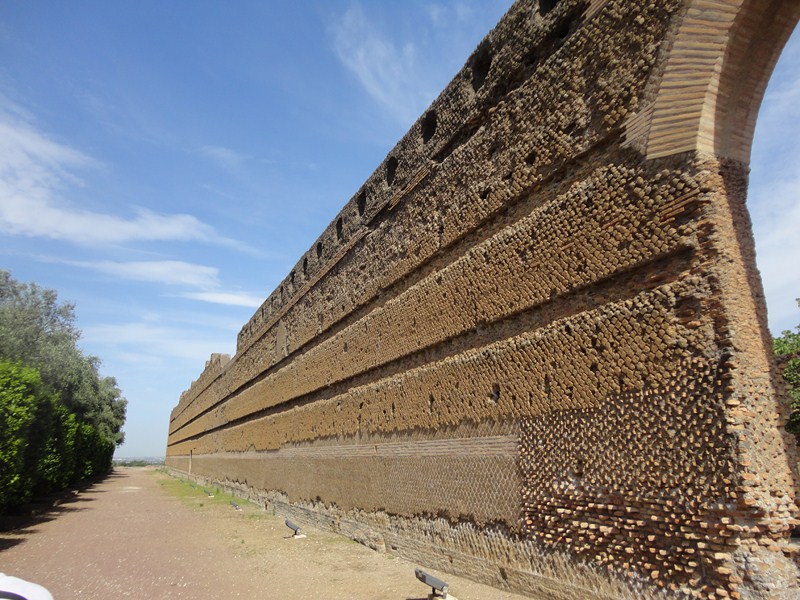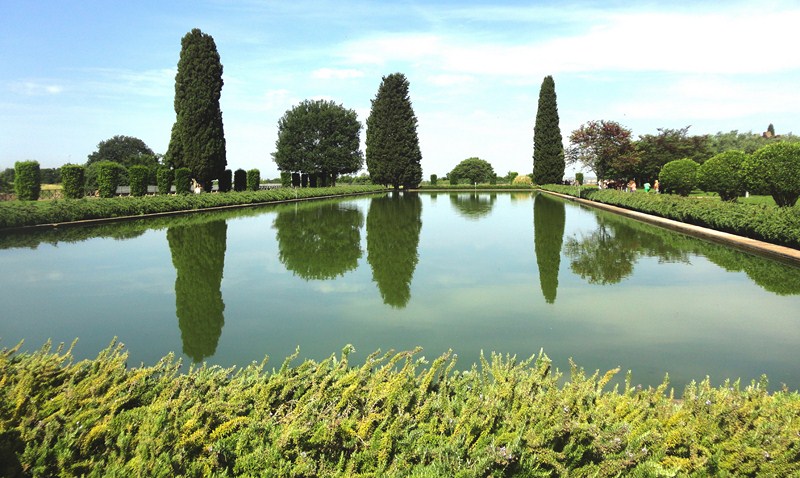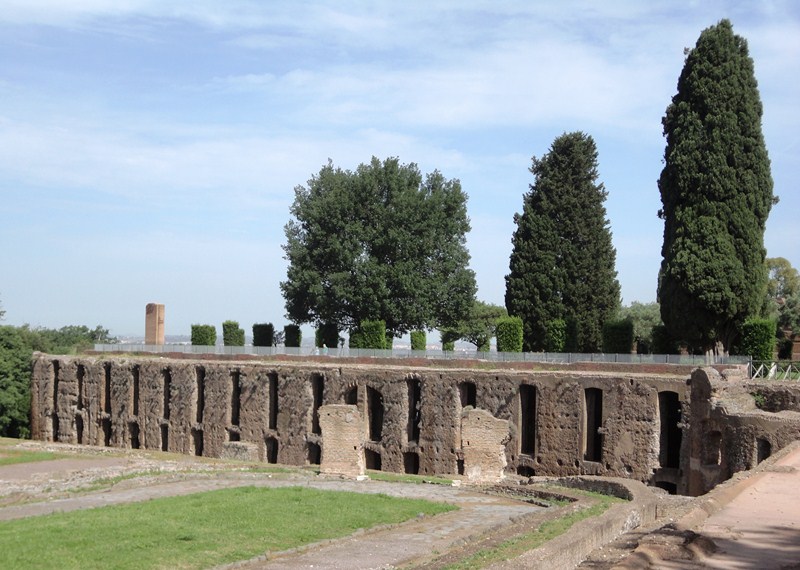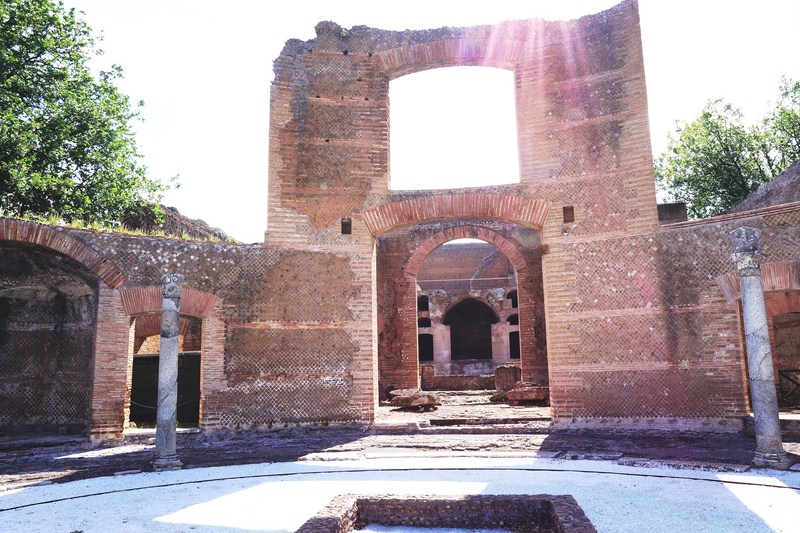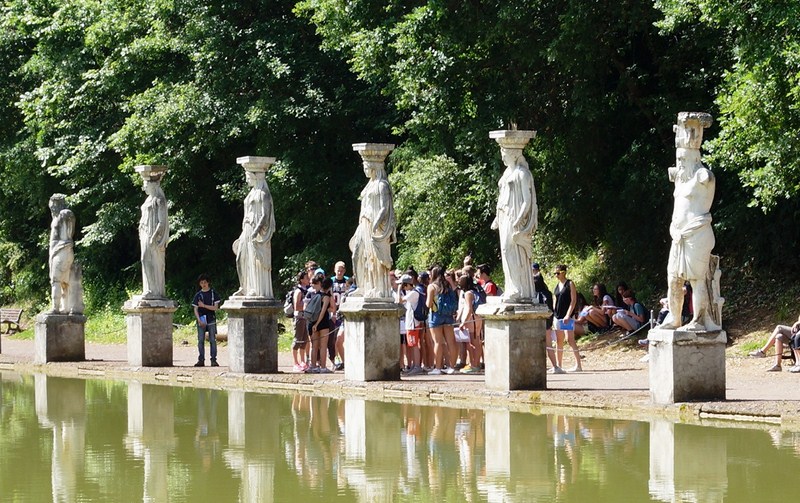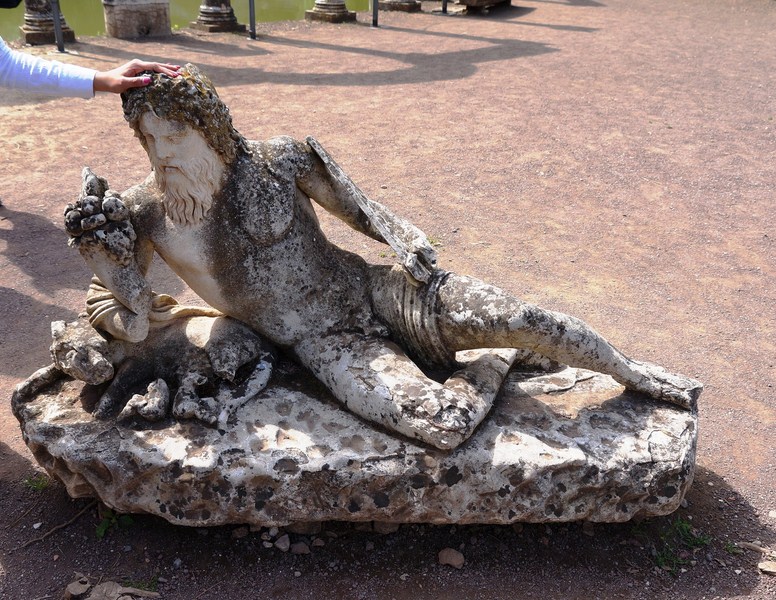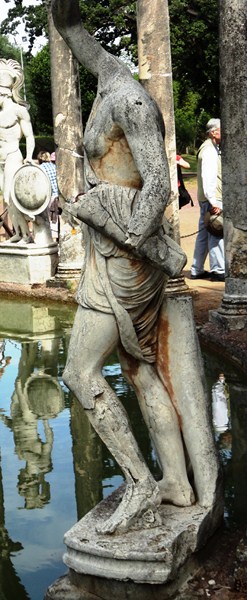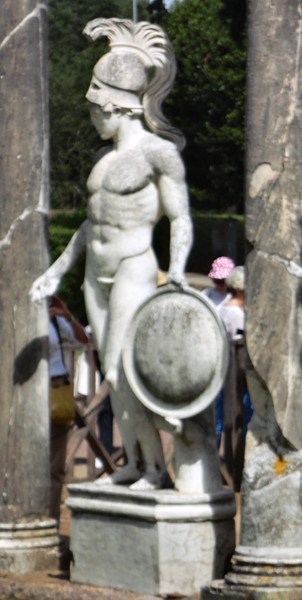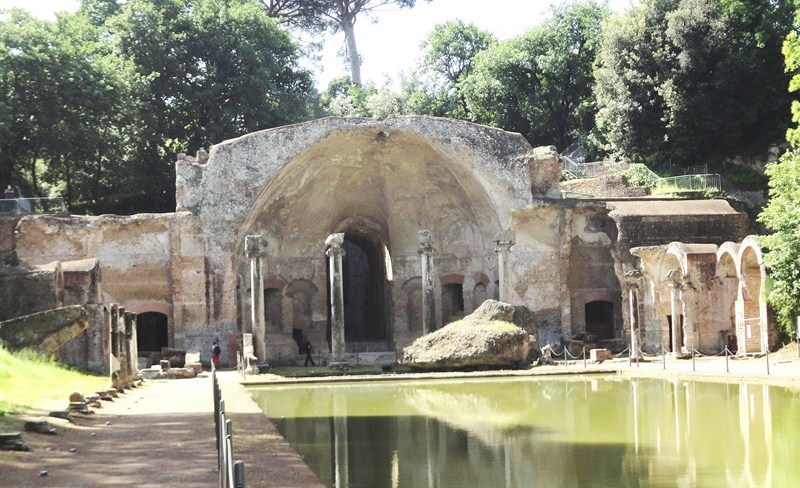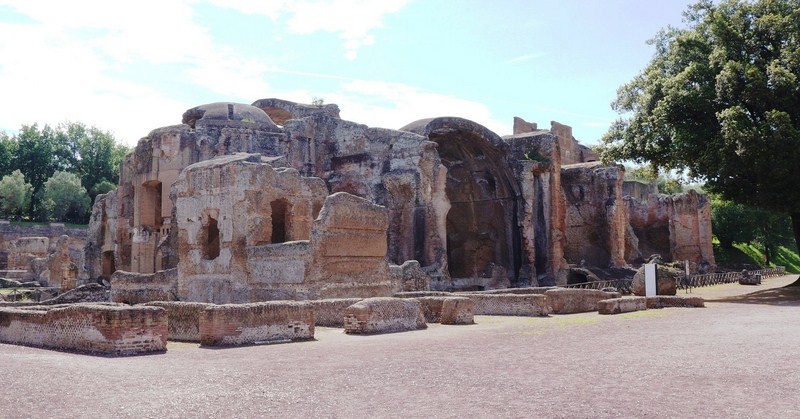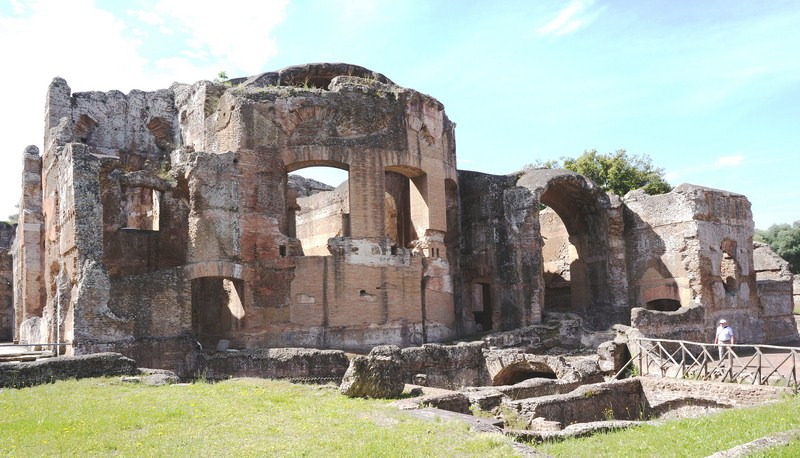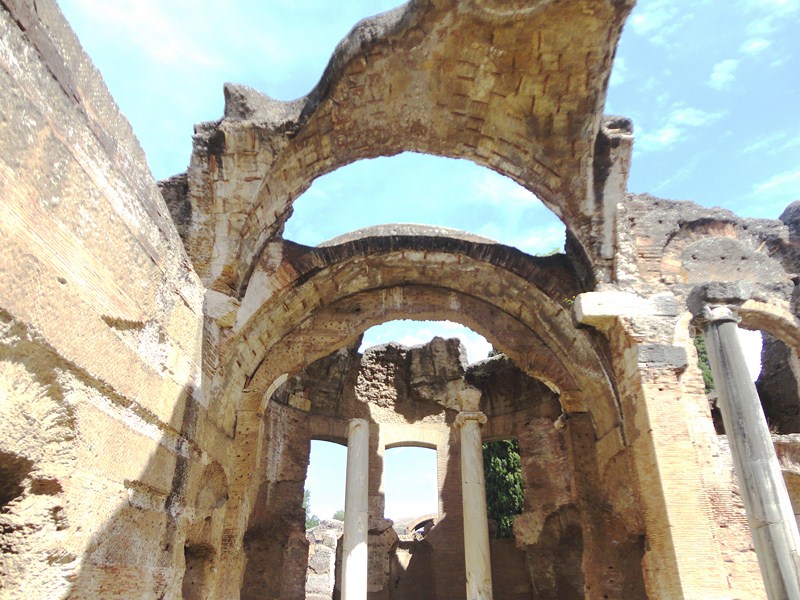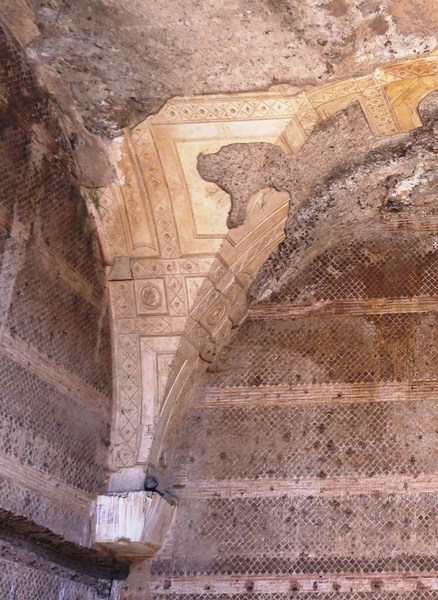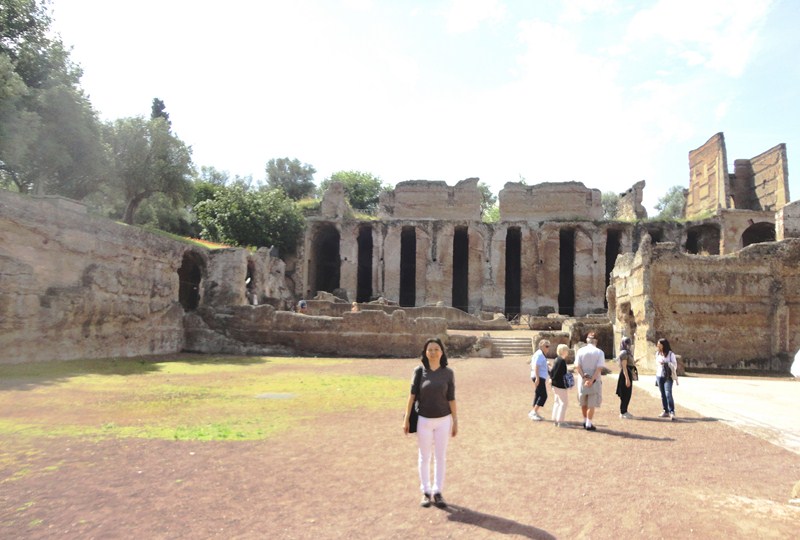Our first trip outside Rome brought us to Hadrian’s Villa (Villa Adriana in Italian), a large, important Roman cultural and archaeological site, major tourist destination (along with the nearby Villa d’Este and the town of Tivoli) and a UNESCO World Heritage Site at Tibur (now modern-day Tivoli). It is situated southeast of Tivoli, on a small plain extending on the slopes of the Tiburine Hills. In early times, it was accessed by the Via Tiburtina and the Aniene river, a tributary of the Tiber River.
Roman Emperor Hadrian, who was said to dislike the palace on the Palatine Hill in Rome, built the villa as his retreat from Rome. Around AD 128, it became his official residence, actually governing the empire from here during the later years of his reign. Therefore, a large court had to live there permanently and a postal service kept it in contact with Rome 29 kms. (18 mi.) away. Although its architect is unknown, it is said that Hadrian had a direct intervention in the design of the villa.
After Hadrian, the villa was occasionally used by his various successors. Busts of Antoninus Pius (138-161), Marcus Aurelius (161-180), Lucius Verus (161-169), Septimius Severus and Caracalla have been found on the premises and Zenobia, the deposed queen of Palmyra, possibly lived here in the 270s after her defeat by Emperor Aurelian.
In the 4th century, during the decline of the Roman Empire, the villa gradually fell into disuse. It was partially ruined as valuable statues and marble were taken away and, during the destructive Gothic War (535–554) between the Ostrogoths and Byzantines, the facility was used as a warehouse by both sides.
Remains of lime kilns, where marble from the complex was burned to extract lime for building material, have been found. In the 16th century, much of the remaining marble and statues in Hadrian’s Villa was removed to decorate Cardinal Ippolito II d’Este own Villa d’Este located nearby. In the 18th century, many antiquities were also excavated by dealers such as Piranesi and Gavin Hamilton to sell to Grand Tourists and antiquarians such as Charles Towneley. They are now in major antiquities collections elsewhere in Europe and North America.
Today, the villa is a property of the Republic of Italy and, since December 2014, was directed and run by the Polo Museale del Lazio . Because of the rapid deterioration of the ruins, the villa was placed on the 100 Most Endangered Sites 2006 list of the World Monuments Watch.
The site of this luxurious complex is a vast area of land (much still unexcavated) with over 30 buildings (including a theatre, libraries, a stadium, servants’ quarters, etc.) covering an area of at least 1 sq. km. (c. 250 acres or 100 ha.), all constructed in travertine, lime, pozzolana and tufa, plus many pools, fountains and water features; thermal baths (thermae); underground supply tunnels; and classical Greek architecture. Abundant water was readily available from aqueducts that passed through Rome, including Anio Vetus, Anio Nobus, Aqua Marcia and Aqua Claudia.
The ground stretches from north to south on a rise of about 40 m., starting from the foot of Monte Arcese, at the top of which is the town of Tivoli. The scale was so amazing, we spent hours wandering among the extensive ruins but only explored a number of buildings. There are essentially three types of buildings in Hadrian’s Villa – servants quarters, secondary buildings (ex. Great Baths) and noble buildings (ex. Small Baths).
The villa, described as an architectural masterpiece and the greatest Roman example of an Alexandrian garden, recreates a sacred landscape and shows echoes of many different architectural orders (mostly Greek and Egyptian) and innovations.
The designs were borrowed and utilized by the very well traveled Hadrian who personally supervised the building work and included these architectural features to remind him of his travels, of the countries he had visited and the times the bisexual Hadrian spent with his deified favorite and lover, Antinous (accidentally drowned in Egypt), around whose youthful charm a cult was established. It is thought that Hadrian modelled parts of his palace on sites he knew and admired throughout his empire, from Athens to Egypt, giving them names such as Lyceum, Academy, Prytaneum, Canopus, Poikile and Tempes. He even made an Underworld.
One of the first stops on our tour of the villa was a little pavilion housing a 1950s plastic model of the villa, giving us an idea of the original appearance of the site. We then passed through a large Wall of the Poikile (a huge rectangular colonnade with a pool in the center, half the structure rests on a large artificial platform), arriving at Hadrian’s Pecile, a huge garden surrounded by an arcade and a large, restored rectangular 232 by 97 m. swimming pool, fishpond or lake in the center of the quadriportico, originally surrounded by four walls (creating a peaceful solitude for Hadrian and guests) with Greek-style colonnaded (these columns helped to support the roof) interior.
The less visible Cento Camerelle (Hundred Chambers), beneath the esplanade of the Pecile, consists of dozens of rooms of lower quality that identify them as the living quarters of the Villa’s serving class. To keep these rooms from becoming too humid, it has a hollow double wall separating them from the adjacent hill. and vast amount of rooms in the Chambers help .
The Building with Three Exedrae, a rectangular, highly articulated complex, has a triple exedra with porticoes on three of its outer walls. One wing of the building has mainly open spaces while the other more has more enclosed areas. The north-facing rooms were used for summer banquets.
The Canopus (named after an Egyptian resort next to Alexandria), one of the most striking and best preserved parts of the villa, is a 119 m. long by 18 m. wide lake with Greek-influenced architecture (typical in Roman architecture of the High and Late Empire) that can be seen in the Corinthian columns, connected to each other with marble, and the copies of famous Greek caryatids that surround the pool.
At its farthest end is the Serapeum, a temple with with a peculiarly-shaped umbrella dome and artificial grotto dedicated to the god Serapis. The Corinthian arches of the Canopus and Serapeum as well as the domes of the main buildings, show clear Roman architecture. Fine mosaics are still preserved in a row of sleeping chambers. Some of the more recent finds and statues from the site are on display in a museum near the Canopus.
Just northwest of the Canopus, in the central part of the villa, are the ruins of the Great and Small Baths. In front were the palestras, open paved courtyards where excersises took place, then calidariums (hot water bath), tepidarium (warm bath), laconicums (circular shaped saunas) and frigidariums (cold water rinsing room). Scattered throughout are a few latrines, one of a single seater in the Small Baths and two public ones in the Great Baths.
The Great Baths (Grandi Terme) were paved in opus spicatum (a simple black and white mosaic) while the Small Baths (Piccole Terme) were done in the higher quality marble opus sectile.
Both used white marble (especially typical of water basins in the villa) revetments as a type of finish and colored fresco ceiling decorations could also be found throughout each (the Small Baths even have some of the red and white pattern still visible today). The noble Small Baths exhibited more elaborate architecture. At the Octagon Hall, the perspective view through other rooms create an illusion of infinite space.
The Praetorium, dating to 125-133 CE, has two distinct levels. The upper level, reserved for distinguished guests, has lavishly decorated rooms facing a large garden to the south, with walls and pavements in opus sectile, and Doric columns of cipollino marble. The lower level, composed of three floors of substructions (servants’ lodgings), supported the richly decorated upper part. It has rooms of utilitarian purpose such as storage rooms and perhaps dormitory rooms for the service staff.
Hadrian’s Villa: Largo Marguerite Yourcenar, 1, 00010 Tivoli RM, Italy. Tel: +39 0774 530203. Admission: €6.50. Open 9 AM to 7 PM.
How to Get There: Frequent buses, operated by Cotral, run from Rome to Tivoli along the Via Tiburtina. They depart from a bus station outside Ponte Mammolo Metro station on Linea B, nine stops from Stazione Termini. This bus service stops on the main road, the Via Tiburtina, about a mile from Hadrian’s Villa. Ask the driver where to get off, then walk along the suburban Via di Villa Adriana to the site’s entrance. An alternative service from Rome to Tivoli, which runs along the Via Prenestina, stops nearer to the villa, but is very infrequent.
An alternative is to catch a second bus out from Tivoli to the archaeological site. A local company called CAT runs a bus service (numbers 4, 4X) from Tivoli to the suburbs near the Villa Adriana. It calls at various bus stops in Tivoli including Piazza Garibaldi. Tickets cost €1 per journey and can be bought at the CAT office, shops and news-stands in Tivoli and from a bar opposite the bus stop (buy your return ticket in advance). Ask the driver where to get off, as the bus drops you a few hundred yards from the site. To return towards Tivoli, leave the villa, walk past the little park and continue straight along the road for a few yards till you find a bus stop. Since the CAT local bus takes the same Via Tiburtina route up into Tivoli as the Cotral buses, you can cross the road and change to the Rome-bound service without riding all the way back into Tivoli.
You can then return to Rome by one of three methods: catch the occasional Via Prenestina bus, walk back to the Via Tiburtina to catch the frequent Rome Cotral bus, or take the CAT service either to the Via Tiburtina or all the way back into Tivoli and change there for a Rome service. It can be slow getting back into Rome during the rush hour, so it’s worth considering visiting on a Saturday when the roads may be clearer.

